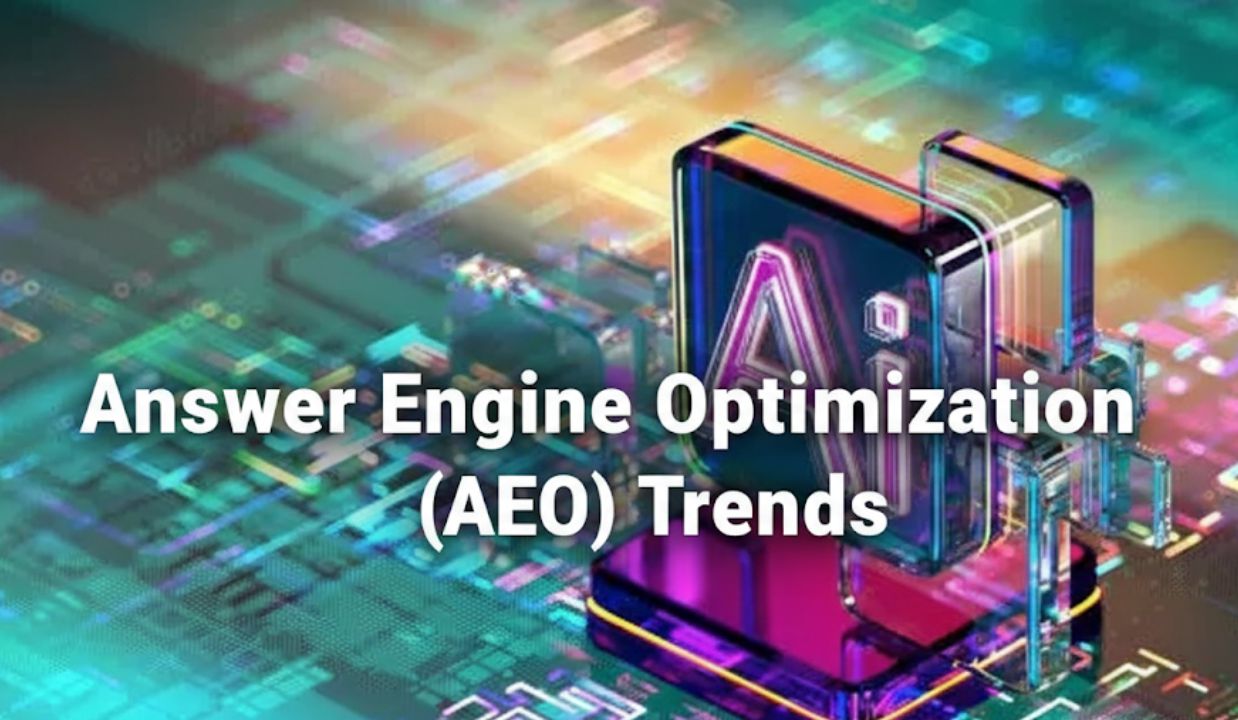Answer Engine Optimization (AEO) Trends 2025: Future of Search
Search is transforming faster than ever before. Traditional SEO, once the backbone of digital visibility, is no longer enough. With the rise of AI-powered search engines and conversational platforms, a new form of optimization has emerged: Answer Engine Optimization (AEO). Unlike SEO, which focuses on keyword rankings and traffic, AEO is about ensuring your content becomes the direct answer to users’ queries—whether through AI assistants, voice search, or generative search platforms.
In 2025, businesses that master AEO will dominate visibility in an increasingly competitive digital ecosystem. This guide explores 13 key trends shaping AEO in 2025, along with actionable strategies you can implement to future-proof your online presence.
1. AI-Powered Search Engines Take Over
Search behavior is shifting dramatically. AI-driven tools such as ChatGPT, Perplexity, Microsoft Copilot, and Google SGE (Search Generative Experience) are becoming users’ go-to platforms for quick, reliable answers. Instead of typing short keywords, users now ask conversational questions—and expect instant, summarized results.
The challenge? These platforms often provide answers without sending traffic back to websites.
How to Adapt:
- Create fact-based, structured content AI can extract easily.
- Use concise summaries at the start of articles.
- Ensure your website is crawlable and technically optimized for AI parsing.
By doing so, you’ll increase the chances of your content being selected as the source behind AI-generated responses.
2. Structured Data Becomes Essential
In 2025, structured data (schema markup) is no longer optional—it’s mandatory. Schema helps AI and search engines understand the context of your page, allowing them to deliver accurate and relevant answers.
Examples of Must-Use Schemas:
- FAQ schema
- HowTo schema
- Product schema
- Article schema
Pro Tip: Use tools like Schema.org or Google’s Rich Results Test to validate your markup. Well-implemented structured data can get your content featured as step-by-step instructions, reviews, or pricing details directly in AI-generated answers.
3. Entity-Based Optimization Leads the Way
Search engines are prioritizing entities (people, brands, locations, and concepts) over traditional keyword strings. Entities help AI understand the meaning and relationships between topics.
Implementation Strategy:
- Mention specific entities (e.g., brand names, places, people) in your content.
- Build semantic connections between related topics.
- Use tools like Google Natural Language API or InLinks to identify relevant entities.
This approach improves your content’s relevance in AI-driven answers, strengthening your brand’s digital authority.
4. Zero-Click and Voice Search Dominate
With zero-click results and voice assistants like Siri, Alexa, and Google Assistant, more users get their answers without visiting a website.
Optimization Tips:
- Use question-based headings: “What is AEO?”
- Provide direct, one-sentence answers at the start of sections.
- Optimize for featured snippets and voice-friendly content.
Remember: short, conversational, and fact-driven responses work best for voice queries.
5. Trust Signals & Author E-E-A-T
In 2025, E-E-A-T (Experience, Expertise, Authoritativeness, Trustworthiness) is critical. AI platforms give preference to content that demonstrates credibility.
Ways to Boost Trust:
- Add author bios with credentials and expertise.
- Cite credible, authoritative sources.
- Keep your content regularly updated.
- Avoid clickbait—prioritize accuracy.
When AI engines detect trust signals, your content is more likely to be selected for answers.
6. Visual & Multimedia Content Gains Priority
AI-powered answers are no longer just text-based. They now feature images, videos, and infographics to improve user experience.
Action Plan:
- Add infographics to explain complex concepts.
- Create short explainer videos on YouTube.
- Use alt-text and descriptive file names for all visuals.
- Add transcripts for videos to make them AI-friendly.
By diversifying your content formats, you improve your visibility across visual, video, and voice answers.
7. Topic Clusters Outperform Isolated Pages
Search engines and AI engines prefer topic clusters—a central hub of content supported by related articles—over isolated blog posts.
Implementation Example:
- Main Hub Page: “Digital Marketing Trends 2025”
- Supporting Pages: “AEO Optimization,” “Voice Search Growth,” “Entity SEO,” etc.
Use internal linking between these articles to strengthen topical authority. This structure signals to AI that your site is an expert resource on a broader theme.
8. Real-Time & Fresh Content Wins
AI prefers recent and updated content. Outdated information gets deprioritized.
Best Practices:
- Refresh old blogs with latest stats, case studies, and examples.
- Use dynamic content (e.g., news updates, live feeds).
- Publish consistently to keep your site active.
Regular updates not only improve rankings but also ensure AI engines select your site for real-time, authoritative answers.
9. Conversational & Intent-Based Optimization
Search queries are increasingly conversational and intent-driven. Users phrase questions naturally, and AI understands them better than keyword-heavy content.
Optimization Strategy:
- Use tools like AnswerThePublic and AlsoAsked to find trending questions.
- Write in a friendly, conversational tone.
- Focus on user intent, not just keywords.
Example: Instead of targeting “AEO guide,” optimize for “How can businesses optimize for answer engines in 2025?”
10. Brand Voice as a Differentiator
With AI capable of generating answers in different tones, having a consistent brand voice helps your content stand out.
- Define your brand personality (expert, casual, friendly, formal).
- Maintain this tone across blogs, videos, and social media.
- A recognizable voice improves brand recall in AI-driven answers.
11. Measuring AEO Performance
Unlike SEO, AEO is harder to measure because AI doesn’t always show traffic or attribution.
Tracking Solutions:
- Log brand mentions across AI platforms (ChatGPT, Bing Chat, Perplexity).
- Use GA4 custom traffic channels like “Answer Engine Traffic.”
- Test visibility manually by asking AI tools relevant queries.
Although tracking isn’t straightforward, consistent monitoring ensures you understand how your brand performs in the AI-driven search landscape.
12. Industry-Specific AEO Techniques
Each industry requires a tailored AEO strategy:
- eCommerce: Use Product schema, customer reviews, and detailed FAQs.
- Healthcare: Add citations from medical authorities and certifications.
- Finance: Publish data-driven content with references to official sources.
- Travel: Highlight local tips, user reviews, and booking links.
Aligning your AEO approach with industry-specific needs improves both visibility and user trust.
13. Preparing for the Future of AEO
The evolution of AEO has only just begun. Expect deeper personalization, smarter AI algorithms, and even more reliance on voice and visual search.
Future-Proofing Strategy:
- Invest in evergreen, high-quality content.
- Stay updated with AI and SEO trends.
- Regularly test your AI visibility.
- Be agile—adapt strategies quickly as AI evolves.
Businesses that stay proactive will thrive, while those relying solely on traditional SEO will struggle for visibility.
Conclusion
The digital marketing landscape of 2025 is being shaped by Answer Engine Optimization (AEO). With AI-powered platforms leading the way, success depends on creating content that is accurate, structured, conversational, and trustworthy.
By following these 13 AEO trends—ranging from structured data and entity optimization to voice search and trust signals—you can secure your place in the AI-driven search future.
The message is clear: Don’t optimize just for search engines. Optimize for answer engines—because that’s where the future of digital discovery lies.
Read Also:

